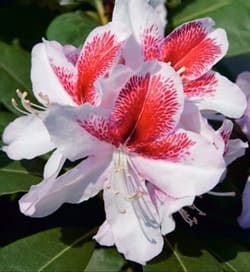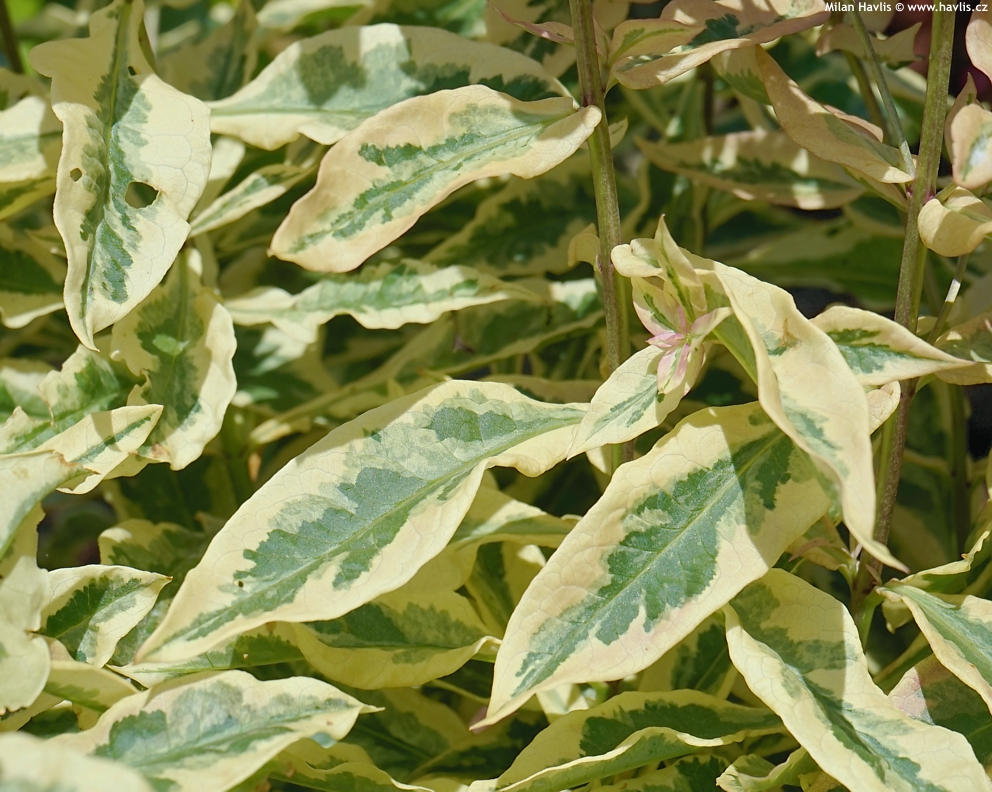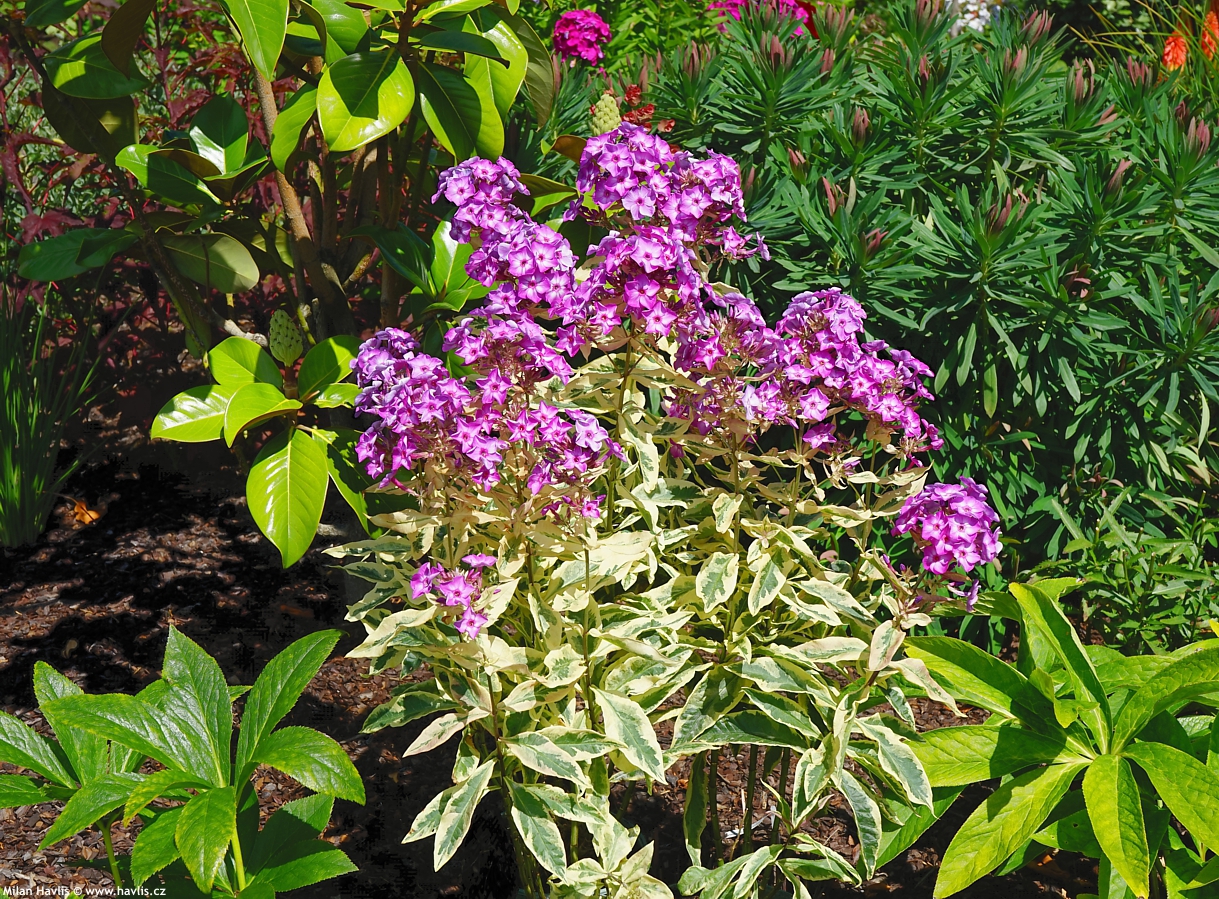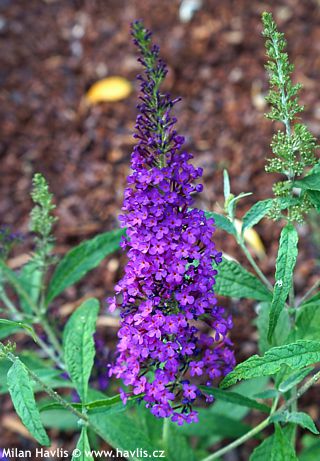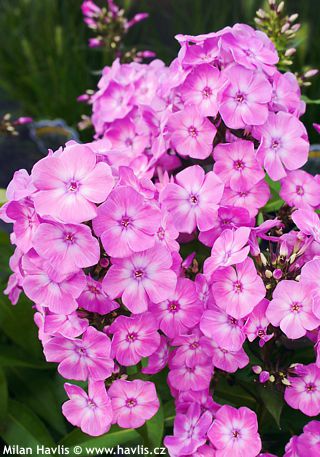Phox paniculata 'OLYMPUS' perennial phlox (panicle type)
Phox
I love seeing that even so-called old-fashioned plants such as perennial phlox still attract breeders’ attention and they invest time and energy in crossbreeding and selecting new, hardier, healthier, and more beautiful varieties. Their popularity is proved by the fact that they occupy 3 large pages in the RHS Encyclopedia of Plants (not many plants can boast that).
Olympus is a masterpiece among panicle phlox developed by Peter Geerlings from the Netherlands. It is a cross between Pixie Miracle variety and an unnamed female p. paniculata selected in 2014. It is unique for its large, variegated foliage which can be somewhat tricky as it may steel all the attention in a perennial border. The leaves are broadly elliptic, 12-14 cm long and 3-4 cm wide, pale green in the centre and heavily margined pale yellow and creamy white. New leaves are deep maroon not just at the ground level when the whole emerges in spring, but the upper part of each stem keeps it purple pink hues until the inflorescence is formed.
In early July appear large, rounded panicles composed of glowing purple pink, moderately fragrant flowers which continue blooming till the last sunny and warm days of September. They attract butterflies and hummingbirds and sit atop 60-80 cm tall, sturdy stems. Olympus phlox was granted these patents: PP33077 (2021 – USA) and EU 61190 (2022 – Evropa).
Growing phlox is easy. It likes almost any garden soil, fertile or poor, but with enough nutrients the flowering will be heavier, and the plant will not suffer common phlox diseases. They are long-lived plants that will stay in your garden until you dig them out. Sunny location is preferred but will flower in partial shade, too. Hardy to about -34°C (USDA zone 4).
Last update 15-08-2022












